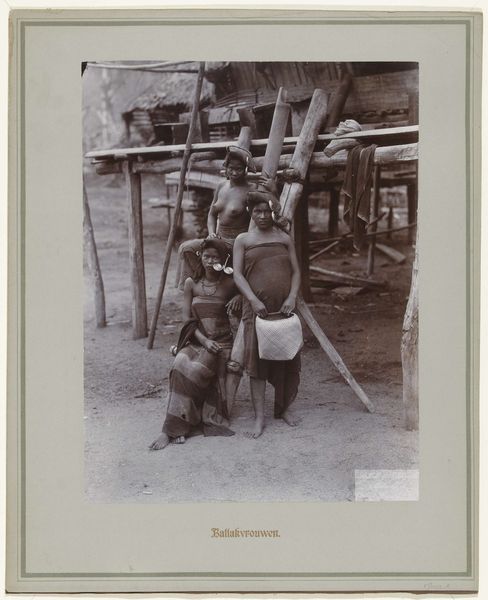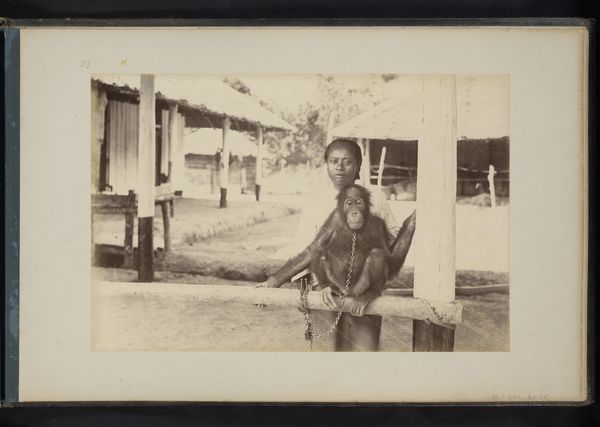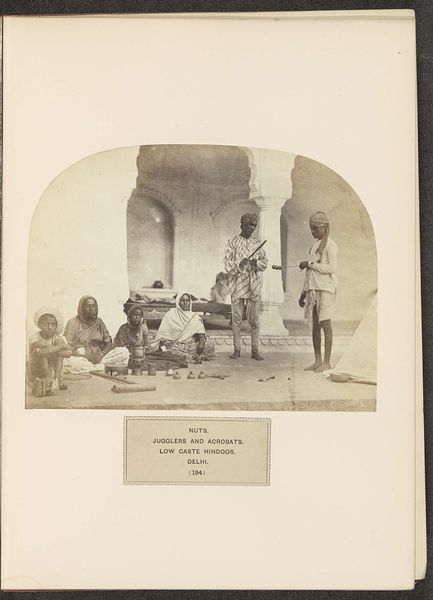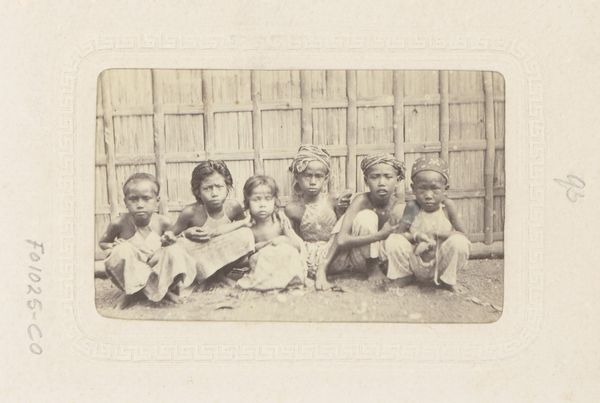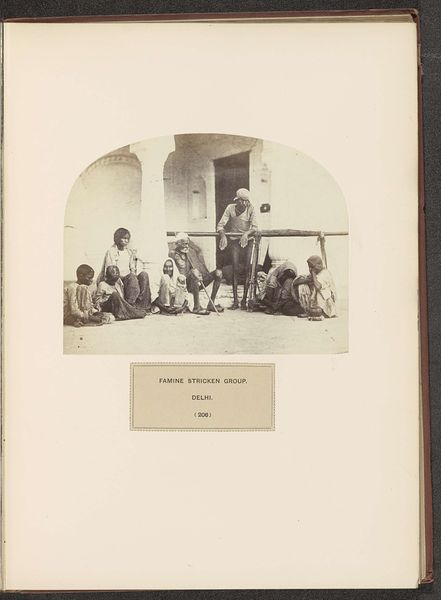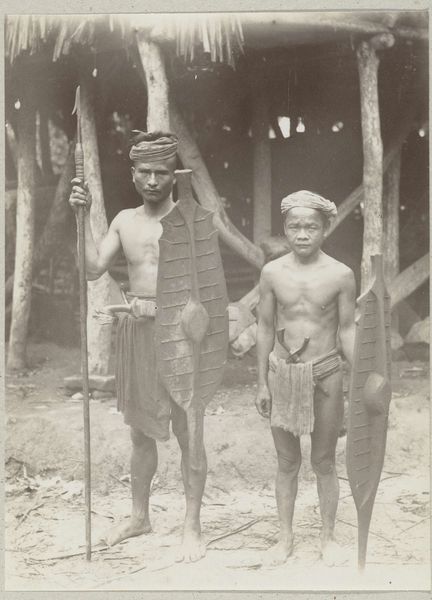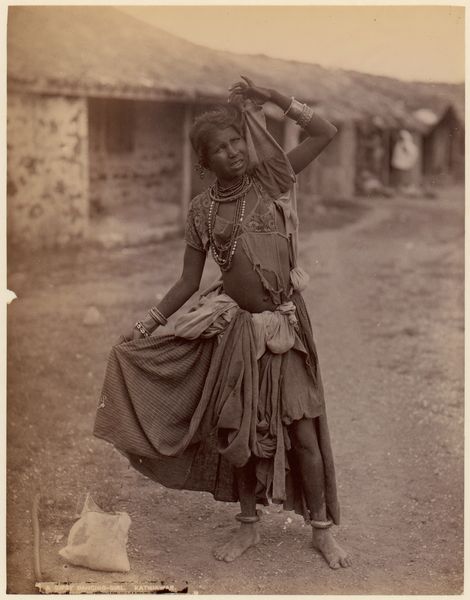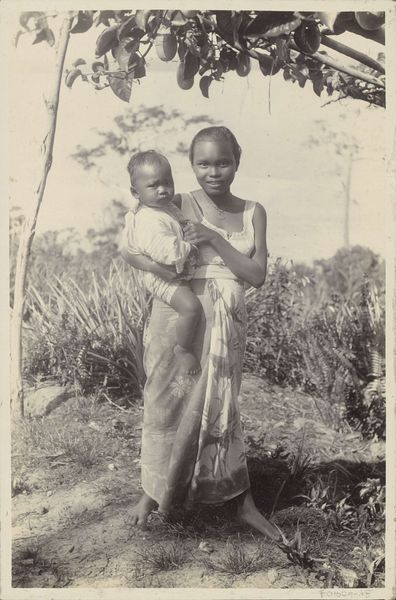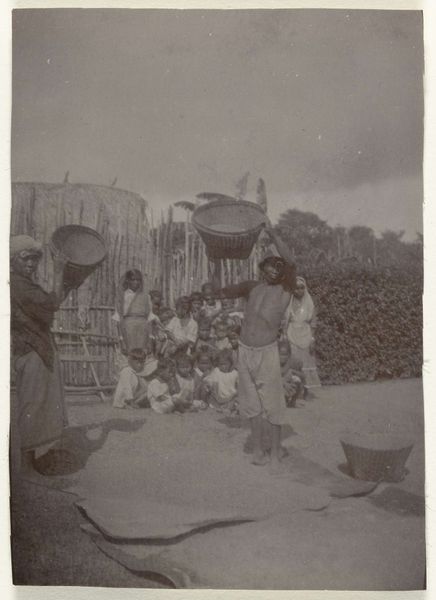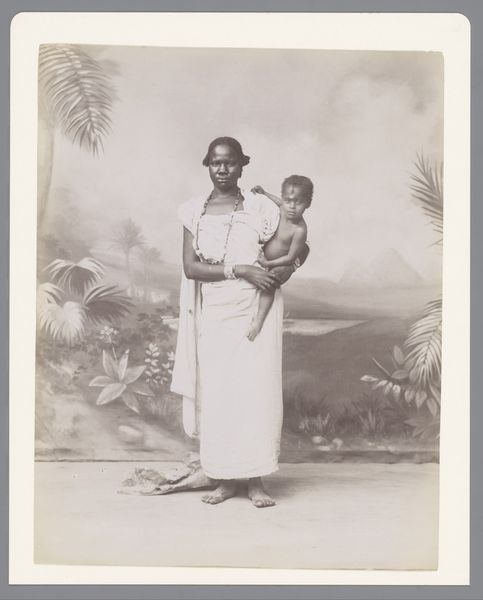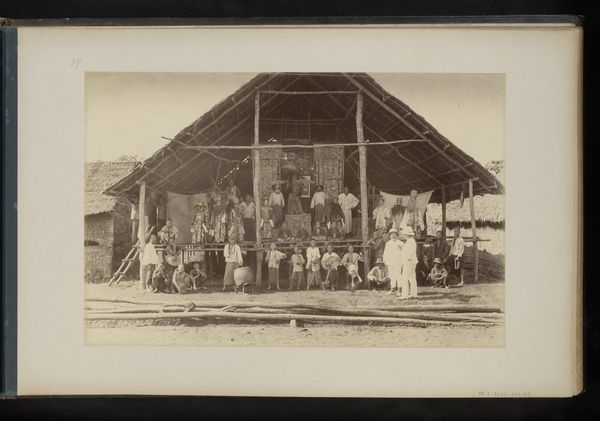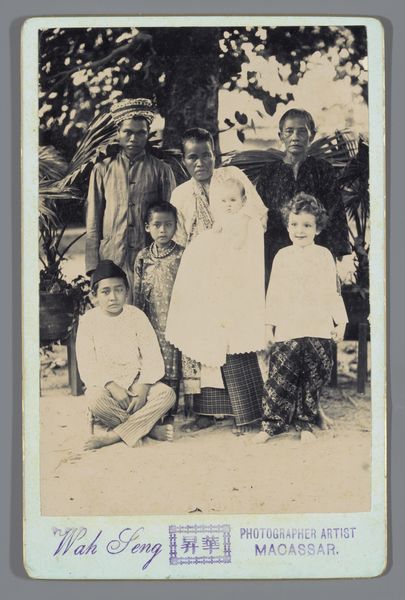
Groepsportret van Batakse vrouwen met werktuigen voor het rijst stampen, Sumatra (Battak-Frauen, Reis stampfend) c. 1890 - 1895
0:00
0:00
albumen-print, photography, albumen-print
#
albumen-print
#
portrait
#
photography
#
group-portraits
#
orientalism
#
albumen-print
Dimensions: height 336 mm, width 252 mm
Copyright: Rijks Museum: Open Domain
Curator: Check out this albumen print! It’s a photograph taken somewhere between 1890 and 1895 in Sumatra, by Stafhell & Kleingrothe. It’s called "Groepsportret van Batakse vrouwen met werktuigen voor het rijst stampen," or "Group Portrait of Batak Women with Rice-Pounding Tools.” Editor: Wow, a heavy feeling emanates from it, doesn't it? Those women…their stillness. They’re not inviting us in; they are simply present, aren't they? It reminds me of old family photographs, somehow – dignity, even in captured silence. Curator: Absolutely. And the albumen print itself, a process using egg whites to bind the photographic chemicals, gives it that wonderfully subtle, almost dreamlike quality. It’s this tension between documentary and something almost staged that I find really compelling. Editor: Makes you consider the labor invested. Not just their rice pounding, but also what’s needed to make a photograph back then! Like albumen from all those eggs! Imagine how those material demands influenced who got photographed. Curator: That’s a great point. This photograph flirts with the ethnographic – but it's complicated. Their tools, that building in the background, it almost romanticizes a vision of life that erases individuality even if each sitter is striking on her own way. Editor: Right, the material world tells a story that a simple “portrait” wouldn’t capture. You see how they work. These are Batak women, and this is part of their existence, presented for, and filtered through, the eyes of colonial viewers and consumers back home. What parts of labor are displayed or ignored to serve their narratives? Curator: So true. There's a stillness but I can't help thinking of the clatter and rhythm that comes from their rice-pounding. Almost wish we had the sounds, scents of the process, too! Editor: Absolutely, these materials evoke an industry that connected those Sumatran rice fields to the industrializing West, but at what cost? And where are the hands that built that dwelling behind them? Invisible within our frame… Curator: So true... It becomes an ode, then, not just to an image, but to the invisible energies and human lives contained within it. It’s strangely poetic and so so problematic at once. Editor: Agreed! I feel strangely humbled and unsettled… and hungry for some rice, come to think of it.
Comments
No comments
Be the first to comment and join the conversation on the ultimate creative platform.
